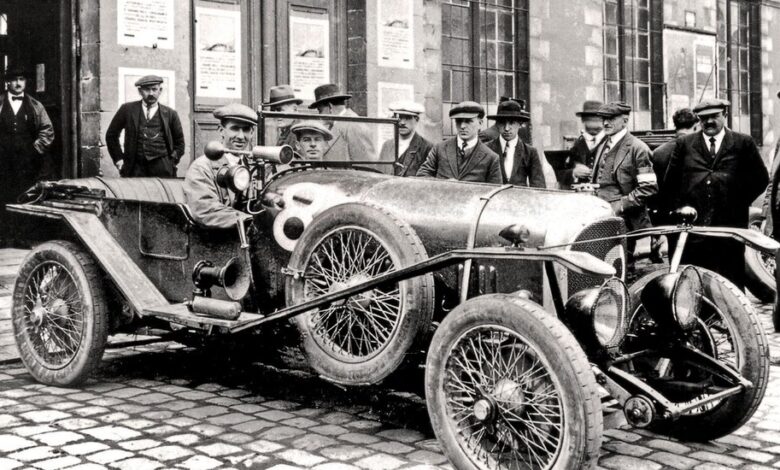24 Hours of Le Mans: In 1924, Bentley Began Its Dominance

The early 1920s was the era of the gentleman driver, mostly wealthy men with their expensive machines, using roads that were still full of horses. In the second 24 Hours of Le Mans, held in 1924, two of these men, driving a Bentley, won the race, leading to the term the Bentley Boys.
The Automobile Club de l’Ouest, the organizers, made a significant change for 1924. Because of heavy rain in 1923, they moved the race forward three weeks to mid-June, when it is still held today.
New rules were also introduced. The club used the race to highlight the durability and practicality of the cars, demanding a minimum of 20 laps between refueling. Coolants and lubricants were also permitted. Cars had to carry a spare tire, and functioning headlights were mandatory.
If the car was a convertible, it had to pit after five laps, put up the top, run for two laps, pit again and have the top checked for its sturdiness before being allowed to continue with it down.
For safety, drivers for the first time had to wear protective headgear. It was rudimentary, generally made from leather, with an adjustable chin strap and forehead peak.
“It was different times for the driver,” Tom Kristensen, a nine-time Le Mans winner, said in a video on the Eurosport website. “The lovely leather seats were not really shaped for the body to give you any comfort.”
The cockpit was “open top, no seatbelts,” he said, and the windshield, which opened outward, was used “to optimize the airflow down the straight at Mulsanne, traveling at 160 kilometers [100 miles] an hour.”
Forty-one cars started the race on June 14. The hot conditions and the increased speed added to the strain on the cars compared with the year before, and only 12 finished, compared with 30 in 1923.
One of the cars that dropped out was the four-liter Chenard Walcker of the previous year’s winners, René Léonard and André Lagache. After leading the race early, as dusk started to fall and with Léonard at the wheel, the car caught fire on the Mulsanne Straight.
Through the night, the fight for victory was among three Lorraine-Dietrich B3-6 Sport and the sole Bentley, a three-liter of John Duff and Frank Clement. The car was made of light aluminum bodywork, with wood supports.
It had, Kristensen said, “four drum brakes on all four wheels, making the car not only faster, but also more consistent and, at the end of the day, more reliable and successful.”
As the Lorraine-Dietrich cars encountered problems into the morning, Duff and Clement built a strong lead until a routine stop to change the rear tires with hours remaining.
In this era, drivers carried out their own refueling, tire changes and repairs. It took about 30 minutes for a seized locking ring to be removed, almost costing them the victory.
At the time, laps were almost 11 miles, and the Bentley covered about 1,280 miles at an average speed of 53 m.p.h. Kristensen said that “over 24 hours, it was a remarkable achievement.” By comparison, last year’s winners, James Calado, Antonio Giovinazzi and Alessandro Pier Guidi in a Ferrari 499P, covered about 2,890 miles at an average of 120 m.p.h.
The 1924 win was the beginning of Bentley’s domination of Le Mans, also winning from 1927 to 1930, cementing the term Bentley Boys. It established, Kristensen said, “the name and reputation of the Bentley cars in the ’20s.”
Seventy-three years after the last of Bentley’s triumphs in 1930, Kristensen returned the name to the top of the podium with victory in the 2003 Le Mans alongside Rinaldo Capello and Guy Smith.



